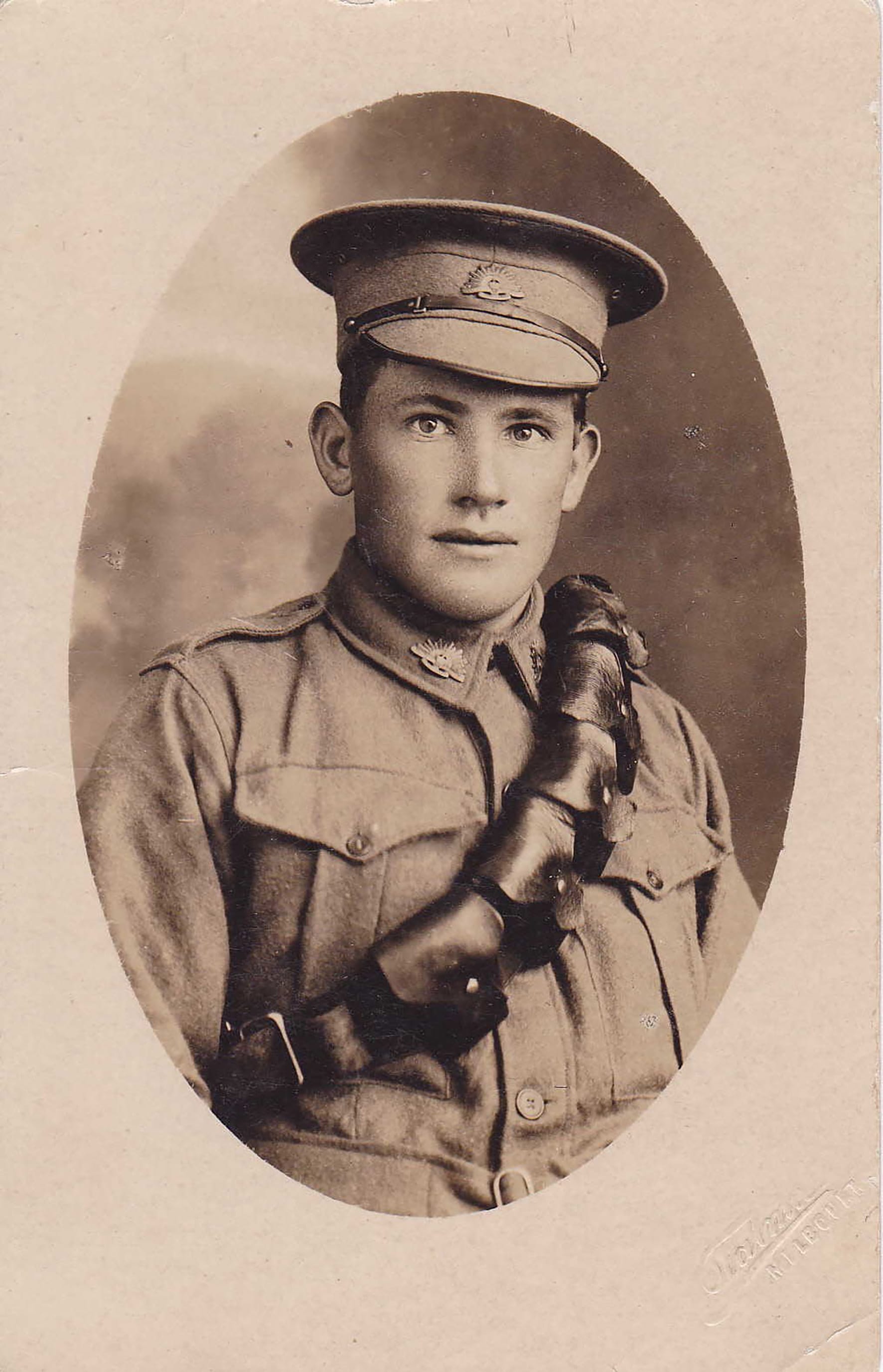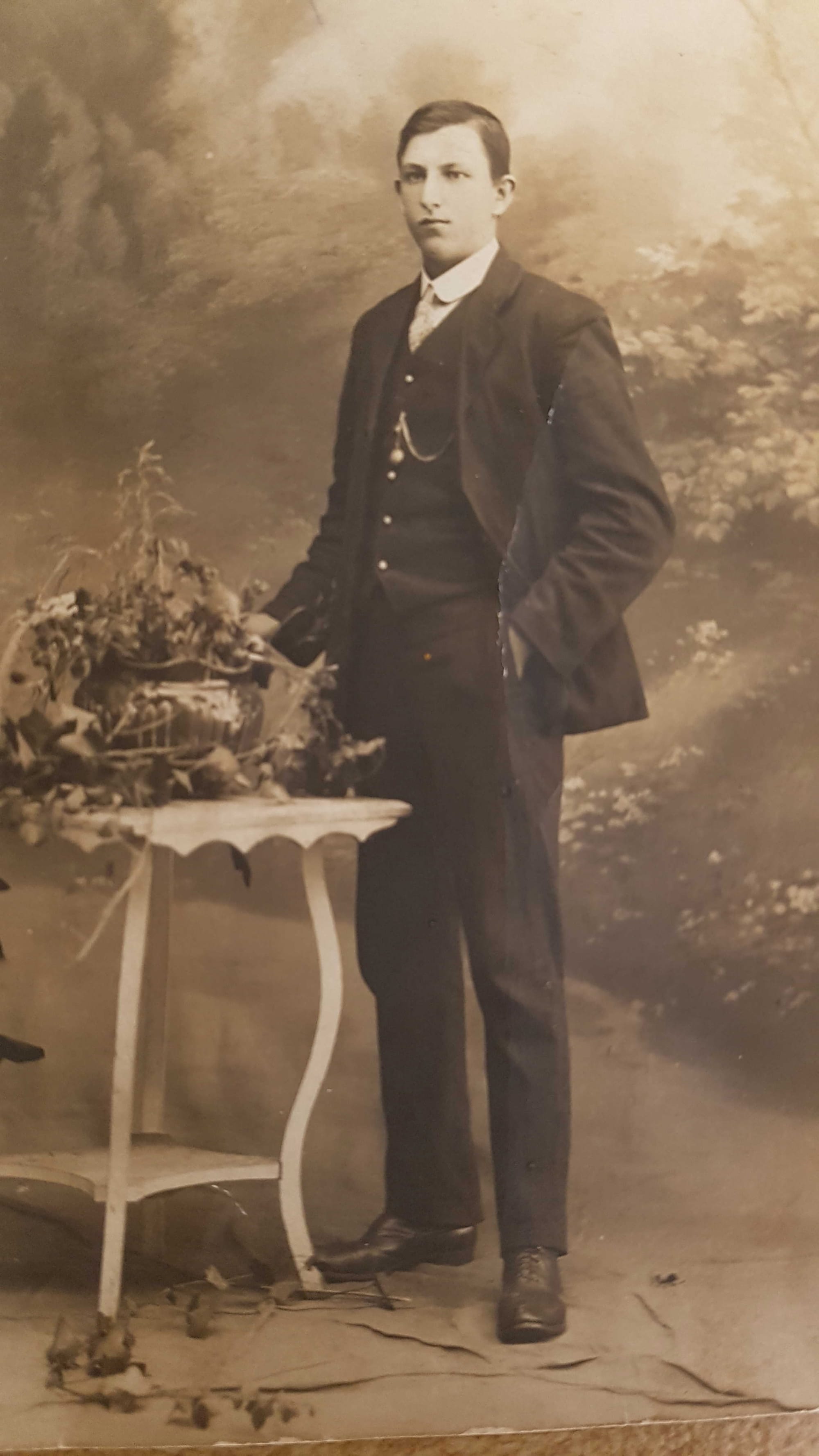Family Contribution To War Effort

The Koch family made a significant contribution to the Australian war effort during the World War 1. No less than four members of the family are listed on the Colbinabbin and Rushworth (Shire of Waranga) war memorials. This is all the more surprising because the family was of Prussian descent, perhaps making them more likely to have been supportive of the German side of the conflict.
However, this was the third generation of the Koch family in Australia. Given the amazing contribution by the family, there seems to be no doubt where their loyalties lay at a time when some people of German descent were being interned for the duration of the war because they were seen to sympathise with the enemy. Like many families of German descent at the time, the Kochs anglicised their name to Cook, although in their case by pronunciation only. The spelling was not changed.
The boys’ grandfather, Friedrich (Fred) Koch, and grandmother Meri (Maria) were born in the Pozen/Posen area of Prussia (now part of Poland, about 300 km east of Berlin) and married there in 1854 before emigrating to Australia. Initially, the gold rush may have prompted the move to Australia, because many of their eight children were born around Castlemaine/Harcourt area, including Frederick Jnr, the father of two of the enlistees. The family moved to the Colbinabbin/Toolleen area when land was opened up for selection, and also had property at Avonmore on the Campaspe River.
When Maria, the matriarch, died in 1894, it was noted that she was “of Mount Pleasant…(and was) a very skilful and respected nurse.”1 This was no doubt handy as she had many of her own grandchildren to deliver. She is buried in the Colbinabbin cemetery.
Fred Junior married Eliza Ann West at his parents’ home property in 1890, and they went on to produce ten children. No 64555 Private Lester Joseph Koch served in the 8th Light Horse Regiment, well known for its role in the infamous charge at The Nek on Gallipoli. Les, as he was known, enlisted later in the war, which was nearly over by the time he got there. He was farewelled by the local community at the Avonmore hall, where he received a wallet and a cigarette case.2 Les also served in Australia in World War Two as part of the 17th Garrison which looked after the No 1 Internment Camp near Waranga Basin. Ironically, many of the inmates were of German descent.

Les’ older brother, No 3309 Leading Seaman Leonard George Koch, had signed up for the Royal Australian Navy in 1913, doing his initial training at HMAS Cerberus in Victoria before becoming part of the crew of the cruiser HMAS Encounter for the duration of the war. The Germans had territory in what is now Papua New Guinea and the Encounter was the first Australian ship to fire a shot in anger during the war when it bombarded the Toma Ridge near Rabaul, then part of a German colony. HMS Encounter spent most of the war close to Australia, including doing escort duty for convoys going to and from the war.
Fred Junior’s brother Heinrich (known as Henry) had married Eliza’s half-sister, Matilda West, in 1881. They also had a large family of nine, with two of their boys signing up for World War 1. No 2096, Private Edgar (Ted) James Koch, served for a time in the 38th Battalion, which has strong connections with Bendigo. It was formed at the Epsom racecourse in March 1916, and went on to fight in many significant battles on the Western Front in Europe. He was severely wounded in the chest and right arm at Broodseinde in Belgium in October 1917 but recovered sufficiently to return to the front in early 1918. Ted also served in the Civil Construction Corps in Australia during World War 2, which assisted with military construction projects as part of the war effort.

Ted’s younger brother Henry (No 20054 Sapper Clarence Henry Koch) enlisted in Rushworth and joined the 1st Division Signals Company in 1917, also serving on the Western Front late in the war. Sappers had the unenviable task of trying to maintain communications on the battlefield. Their equipment, including the all-important wiring, was often destroyed by shell fire and had to be replaced as soon as possible, often under fire.

Local communities made a point of organising welcome home events for men and women who had served overseas. Len Koch was part of a welcome home at the Colbinabbin hall, where the community honoured him and five others (A Dobie, J McEvoy, E C Hill, W Aylett and Les Roberts) with specially struck gold medals. Further medals were given out at a welcome home at Avonmore hall to Len and Les, while at Oswald’s Hall at Colbinabbin West, Les, Clarence and Edgar all received medals recognising their service and sacrifice.
What an amazing contribution the Koch family made to the war effort. There was a large, extended Koch family in the Colbinabbin - Mount Pleasant - Avonmore areas who would have been beside themselves with worry during the war years. Fortunately, all of their boys survived to return home, be reunited with family and friends and make ongoing contributions to their respective communities.
References 1 PROV, Magisterial Inquiry into the death of Maria Koch; 2 Elmore Standard 7.9.1918; Other – Ancestry, AWM, NAA, Trove websites. Thanks to Carl Koch and Nance Niven of Elmore.




